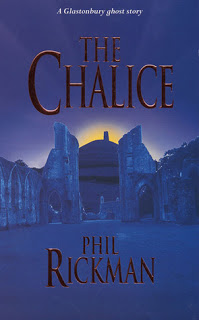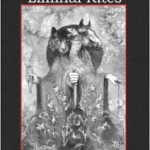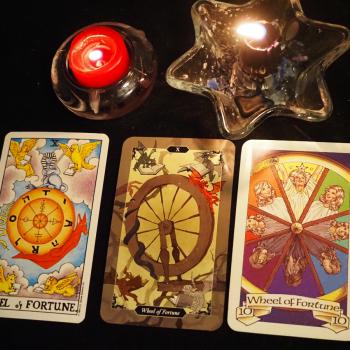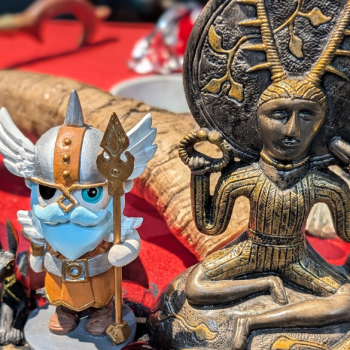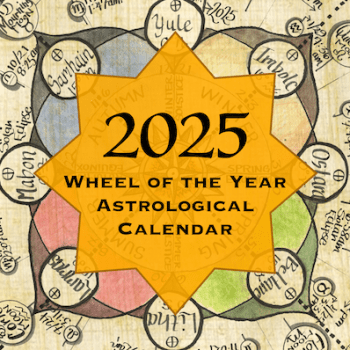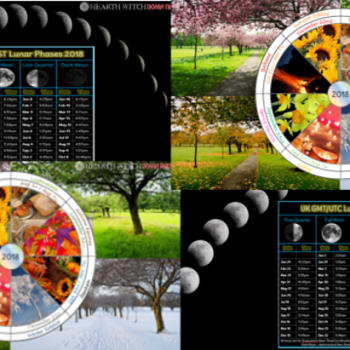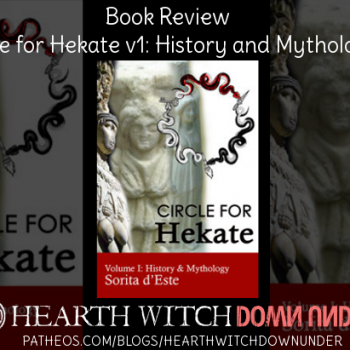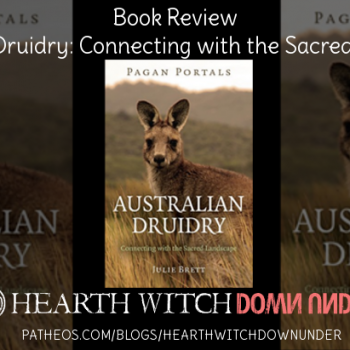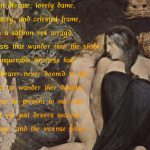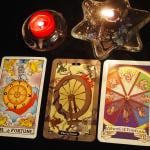The Chalice: A Glastonbury Ghost Story, by Phil Rickman.
“Glastonbury, legendary resting place of the Holy Grail, is a mysterious and haunting town. But when plump, dizzy Diane Ffitch returns home, it’s with a sense of deep unease – and not only about her aristocratic family’s reaction to her broken engagement and her New Age companions.
Plans for a new motorway have intensified the old bitterness between the local people and the ‘pilgrims’, so already the sacred air is soured. And, as the town becomes increasingly split by violence and death, Diane, local bookseller Juanita Carey and the writer Joe Powys must now face up to the worst of all possibilities: the existence of an anti-grail – the dark chalice.”
I bought this book on a random whim back in 2005 – I know this because I evilly mark the top corners of the inside front cover of my books with my name on the left and the year on the right. I don’t recall the actual buying of the book, or the reason why – I generally don’t buy books without knowing the author. But I guess I figured, meh, why not, it’s secondhand and only $2, sounds okay and looks ghosty. I do remember that I bought another book at the same time, one that was also unusual for me to buy.
Eleven years I have had this book, this was maybe the fourth time I have read it.
The Chalice is a good book, in my opinion. It’s not my favourite in the whole world, it’s not my favourite genre, but it’s good and worthy of re-reading every few years. I enjoy it immensely and it sucks me in, like a good book should.
I love that it begins the story with Violet Firth aka Dion Fortune as a character in the story (not throughout, just the first little bit, the intro and otherwise mentioned frequently). Reading her as a character made her a bit more of a person than some legendary figure of modern Pagan history. It also nods at John Cowper Powys by having a maybe-descendent of his, Joe Powys, also a popular Pagan author (in the story).
When I first read this book, I didn’t really know much about Glastonbury – the Grail is Christian myth after all. But after reading this book I had added it to my Must Visit if I Ever Have the Money list. I don’t imagine I shall be confronted with any magical Chalice, grail or anti-grail, if I ever go there – but the Tor, the Abbey, the history of the place, that is worth seeing. And this book is what made me realise that. Re-reading it this time, just reinforces that feeling.
The paranormal side of the story is fun, the idea of a dark chalice, an anti-grail – awesome! I liked how it made the Pagan-y characters seem like, though they were Pagan or New Age, and they felt familiar with the paranormal – the still could freak right the hell out when confronted by even the basic stuff, like a poltergeist.
But what I truly love about this book is it’s no nonsense look at Pagans and New Agers. It shows all the forms that really actually exist. The, maybe believe but maybe don’t believe. The ones on the fringes. The New Age Fadders. The old style hippies, still living the hippy life. The extreme feminist Wiccans. The Dark and Scary Pagans who might, literally, kill you. The ones losing interest, losing faith. The ones who have experience with the supernatural, but don’t treat it like no big deal (on the inside, they show a brave face though). The manipulative ones. The cultist ones. The show ponies out to make money. And more.
It’s real. These characters are real types of Pagans and New Agers. None of this, Pagans are Evil, or Pagans are all Good, stuff. Not even, all Pagans are magical. No, it’s real and human. We are, after all, human and then Pagan. And this book gives you glimpses and long views into that.
It shows you the interplay between the different types of Pagans and New Agers, how they interact with each other – and yes, even how they hate each other. It shows how they interact with non-Pagans and how they face people who hate Pagans/New Agers.
So for me, the pull really is the way the Pagans and New Agers are portrayed – and just as a note, I reference both Pagans and New Agers, because many of the characters self-identify as New Agers rather than Pagan, and some are most definitely New Agers and not Pagan.
The paranormal stuff is great of course. And Glastonbury is something I love in this book. But it’s the way we are portrayed that makes me love this book so much. I suppose too, the realistic-ness of the people makes the unrealistic stuff seem more believable. Which is only a good thing.

